Two days after Erin Adelekun gave birth to her first child, she felt a minor headache when she went home from the hospital. Her doctor wasn’t concerned and advised taking a pain reliever.
But about a week later, Adelekun woke up with the worst headache she’d ever felt.
When her husband called her to say breakfast was ready that morning, the new mom thought she responded, “I’ll be down in a minute,” but heard only garbled speech. She kept talking, but what came out of her mouth sounded like the letter “R” being repeated over and over.
“When I got downstairs, my right arm went limp and I knew I was having a stroke,” Adelekun, who lives in Upper Marlboro, Maryland, tells TODAY.com.
She knew because she remembered those two warning signs — slurred speech and arm weakness — listed among stroke symptoms on a stress ball she picked up at a health fair and used to play fetch with her dog.
Pregnancy puts women at higher risk for stroke, especially in the last month before delivery and the first six weeks after giving birth, according to the National Heart, Lung and Blood Institute. Black women in particular have a higher risk of maternal stroke, studies have found.
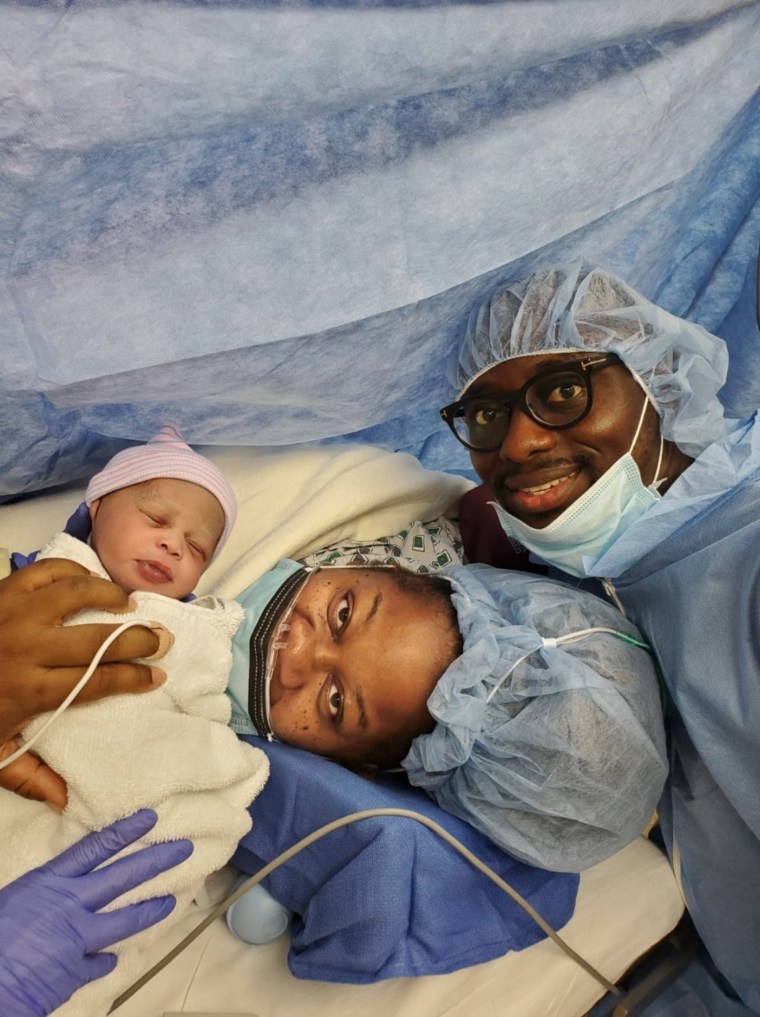
Adelekun was just 38 years old when the massive stroke happened in August 2020. Her world would never be the same, but she’s found a new mission as “Stroke Mama” on Instagram, raising awareness about symptoms and what it’s like to recover.
“Erin is just amazing. She didn’t give up on anything,” Dr. Emma Nally, a brain injury and stroke specialist at MedStar National Rehabilitation Hospital in Washington, tells TODAY.com about her patient.
“Her spirit and attitude made a huge difference in her recovery.”
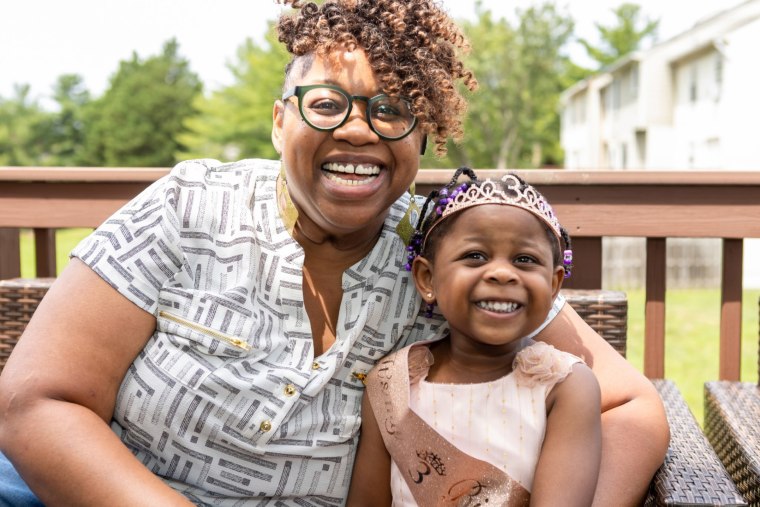
‘I couldn’t walk. I couldn’t talk’
By the time Adelekun’s husband rushed her to the nearest hospital, her right leg had also gone limp. The last thing she remembers is her body shaking on the MRI table in a seizure. She was in a medically induced coma for the next three weeks.
Adelekun had a very large hemorrhagic stroke, according to Dr. Jeffrey Mai, a neurosurgeon at MedStar Washington Hospital Center, where she was medically evacuated.
A blood vessel had ruptured, bleeding into both sides of her brain. It caused brain swelling, so he had to remove a piece of her skull to give the brain room to expand, which relieved pressure and helped Adelekun stabilize, Mai explained in a video about her case. The bone flap was later put back in during a second procedure.
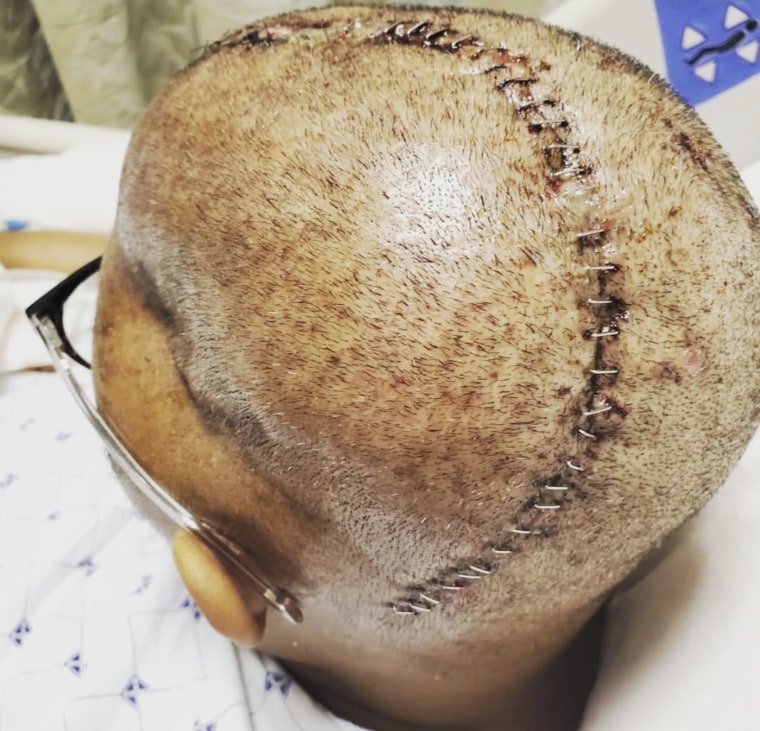
When Adelekun woke up from the coma, her entire right side was paralyzed.
“I couldn’t walk. I couldn’t talk. I just made sounds. I pointed to pictures to communicate. I didn’t know what was happening to me,” she recalls.
It was the height of the pandemic, and it turned out Adelekun had COVID-19, too, so she spent three months in a room by herself recovering from her stroke — no visitors allowed. She saw her husband and newborn daughter during video calls, but wouldn’t be able to hold her baby until she was 4 months old.
“I had some time to cry,” Adelekun recalled. “But then I was just like, alright, now let’s get to work. … I wanted to see my daughter and experience motherhood. That is what kept me going.”
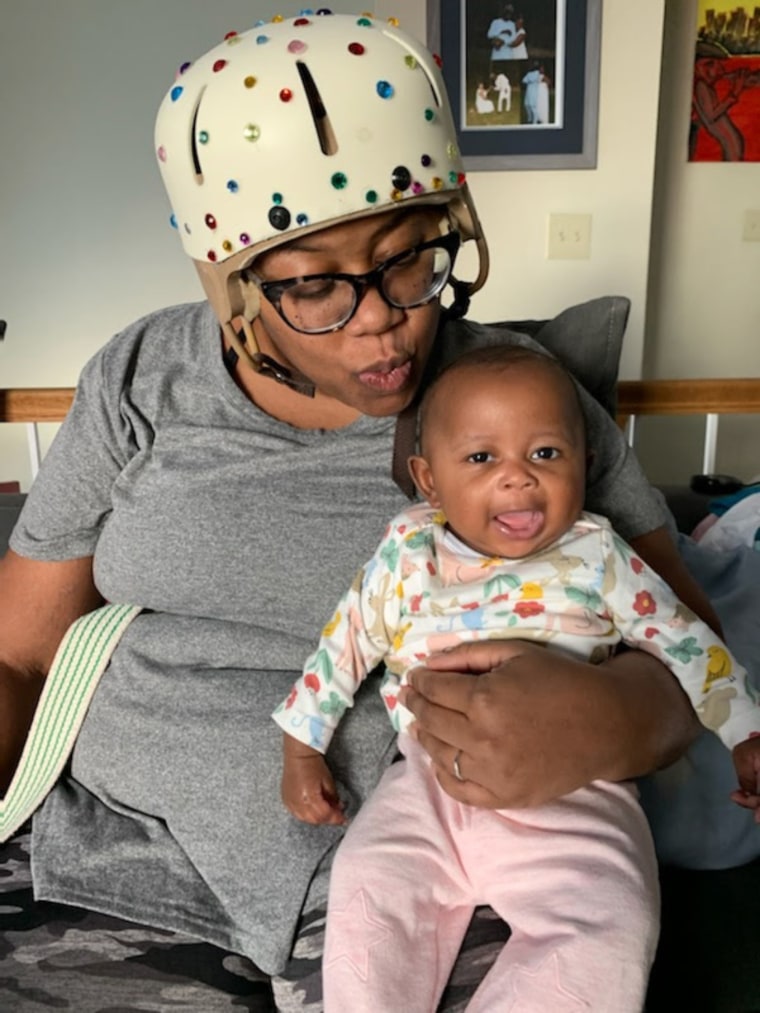
Getting better
It was the start of physical and speech therapy that continues to this day. The stroke caused aphasia — damage to parts of the brain responsible for language — which left Adelekun struggling for words. It was crushing for a woman who calls herself a “born talker” and was used to leading meetings as a project manager.
“That is the most infuriating thing, to not be able to figure out the words — and I know the words,” she says.
“I was educated, and I couldn’t put together two sentences. I just felt embarrassed. … I didn’t want to talk at all.”
But Adelekun needed to talk to get better, so her speech pathologist encouraged her to call for pizza on the phone and order from the menu at a restaurant. It took a long time to say what she wanted, but she found the wait staff to be amazingly patient.
She now walks with a cane and drives an adaptable car with a left foot accelerator and a steering wheel spinner knob. Her right hand is curled up in a ball, so she’s focused on straightening her fingers, grasping and releasing.
“I’m getting back to the place where I was before the stroke. It is different, but different doesn’t necessarily mean bad. It just means different,” Adelekun says. “I am living the abundant life with my family.”
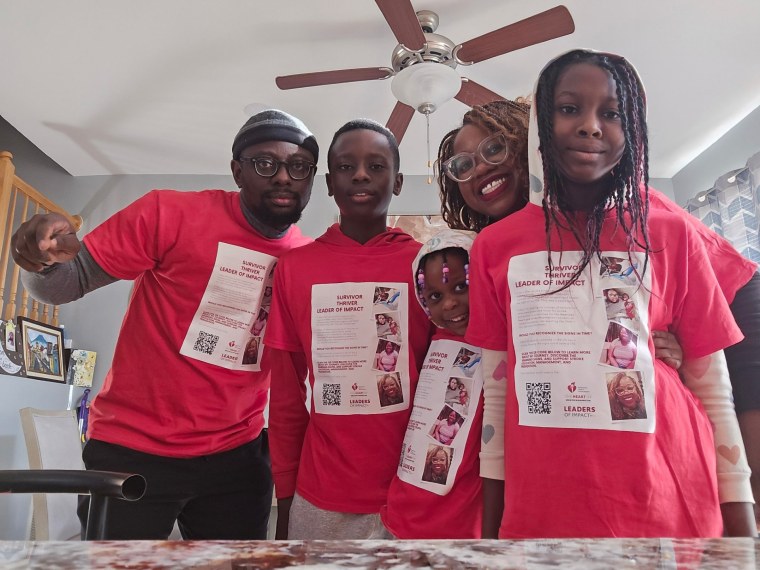
Stroke risk in pregnant women
It’s very rare to have a stroke during or after pregnancy, and doctors don’t know exactly what caused Adelekun’s brain bleed, Nally says.
She didn’t have high blood pressure and suffered a less common type of stroke caused by a ruptured blood vessel rather than a clot that blocks a blood vessel.
But there are some things to keep in mind.
A pregnant woman’s blood is more likely to clot — a protective mechanism to lower the risk of major blood loss during childbirth, Nally notes. This also means blood clots can sometimes travel to the brain, blocking an artery and causing a stroke.
Preeclampsia, a pregnancy complication marked by inflammation and high blood pressure, is a stroke risk factor because it puts pressure on small blood vessels in the brain, Nally says.
A C-section can also increase the risk of stroke — it’s major abdominal surgery that can come with pain and a lot of down time afterwards, causing blood to pool and clot in some cases, she adds.
Women should talk about their risk factors with their doctor and be aware of stroke symptoms, summarized by the acronym “BE FAST.”